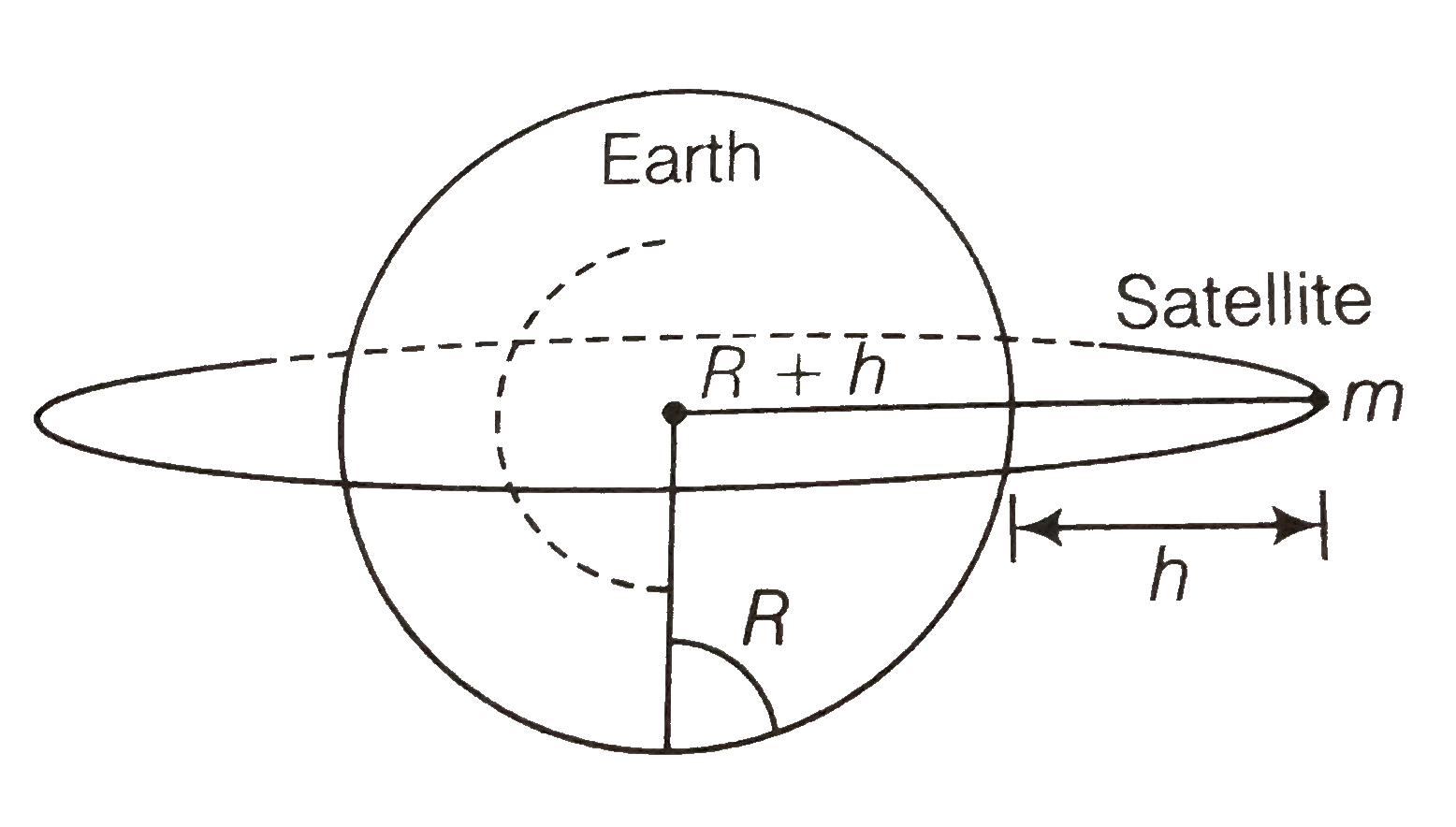A fax message is to be sent from Delhi to washington via a geostationary satellite. Calculate the minimum time delay between
the dispatch and its getting received. Take
height of the geostationary satellite = 36000
km.
72×103km
12×103km
27×103km
18×103km
The correct Answer is:A
To calculate the minimum time delay for a fax message sent from Delhi to Washington via a geostationary satellite, we can follow these steps:
Step 1: Understand the Distance
The height of the geostationary satellite is given as 36,000 km. Since the signal has to travel to the satellite and then back to Earth, we need to calculate the total distance.
Total Distance (s) = Distance to Satellite + Distance back to Earth
Total Distance (s) = 36,000 km + 36,000 km = 72,000 km
Step 2: Convert Distance to Meters
Since the speed of light is typically expressed in meters per second, we need to convert the distance from kilometers to meters.
Total Distance in meters = 72,000 km × 1,000 m/km = 72,000,000 m
Step 3: Use the Speed of Light
The speed of light (c) is approximately 3×108 m/s.
Step 4: Calculate Time Delay
We can calculate the time delay using the formula:
Time Delay (t)=Distance (s)Speed of Light (c)
Substituting the values we have:
t=72,000,000 m3×108 m/s
Step 5: Simplify the Calculation
Now, we can simplify the calculation:
t=72,000,000300,000,000=0.24 seconds
Conclusion
The minimum time delay between the dispatch and receiving of the fax message is approximately 0.24 seconds.
---
The height of the geostationary satellite is given as 36,000 km. Since the signal has to travel to the satellite and then back to Earth, we need to calculate the total distance.
Total Distance (s) = 36,000 km + 36,000 km = 72,000 km
Since the speed of light is typically expressed in meters per second, we need to convert the distance from kilometers to meters.
The speed of light (c) is approximately 3×108 m/s.
We can calculate the time delay using the formula:
Now, we can simplify the calculation:
The minimum time delay between the dispatch and receiving of the fax message is approximately 0.24 seconds.
Topper's Solved these Questions
- COMMUNITCATION SYSTEMSBOOK - NCERT FINGERTPS ENGLISHCHAPTER - COMMUNITCATION SYSTEMSEXERCISE - HOTS
20 Videos
- COMMUNITCATION SYSTEMSBOOK - NCERT FINGERTPS ENGLISHCHAPTER - COMMUNITCATION SYSTEMSEXERCISE - NCERT
9 Videos
- ATOMS BOOK - NCERT FINGERTPS ENGLISHCHAPTER - ATOMS EXERCISE - Assertion And Reason
15 Videos
- CURRENT ELECTRICITYBOOK - NCERT FINGERTPS ENGLISHCHAPTER - CURRENT ELECTRICITYEXERCISE - Assertion And Reason
15 Videos
Similar Questions
find the minimum coaltitude which can directly receive a signal from a geostationary satellite.
View SolutionConsider earth satellites in circular orbits. A geostationary satellite must be at a height of about 36000 km from the earth's surface. Will any satellite moving at this height be a geostationary satellite? Will any satellite moving at this height have a time period of 24 hours?
View Solution
Knowledge Check
A fax message is to be sent from Delhi to Washington via a geostationary satellite. The minimum distance between the dispatch and its getting received is (Take height of the geostationary satellite=36000km)
A72×103kmB12×103kmC27×103kmD18×103kmA satellite is to be placed in equatorial geostationary orbit around the earth for communication.
(a) Calculate height of such a satellite
(b) Find out the minimum number of satellites that are needed to cover entire earth, so that atleast one satellite is visible from any point on the equator.

[M=6×1024kg,R=6400km,T=24h,G=6.67×10−11 SI unit ]A3.57×105mB3.57×106mC3.57×107mD3.57×108mThe orbit of geostationary satellite is circular, the time period of satellite depeds on (i) mass of the satellite, (ii) mass of earth, (iii) radius of the orbit and (iv) height of the satellite from the surface of the earth
A(i) onlyB(i) and (ii)C(i),(ii) and (iii)D(ii),(iii) and (iv)
A satellite revolves in the geostationary orbit but in a direction east to west. The time interval between its successive passing about a point on the equator is:
View SolutionA satellite revolves in the geostationary orbit but in a direction east to west. The time interval between its successive passing about a point on the equator is:
View SolutionA satellite revolves in the geostationary orbit but in a direction east to west. The time interval between its successive passing about a point on the equator is:
View SolutionA satellite is to be put into an orbit 600km above the surface of the earth. If its vertical velocity after launching is 2400m/s at this height, calculate the magnitude and direction in the impulse required to put the satellite directly increase. The mass of the satellite is 60kg and the radius of the earth is 6400km. Take g=10ms−2
View SolutionA satellite is to be placed in equatorial geostationary orbit around earth for communication.
(a) Calculate height of such a satellite.
(b) Find out the minimum number of satellites that are needed to cover entire earth so that at least one satellites is visible from any point on the equator.
[M=6×1024kg,R=6400km,T=24h,G=6.67×10−11SIunits]
View Solution
